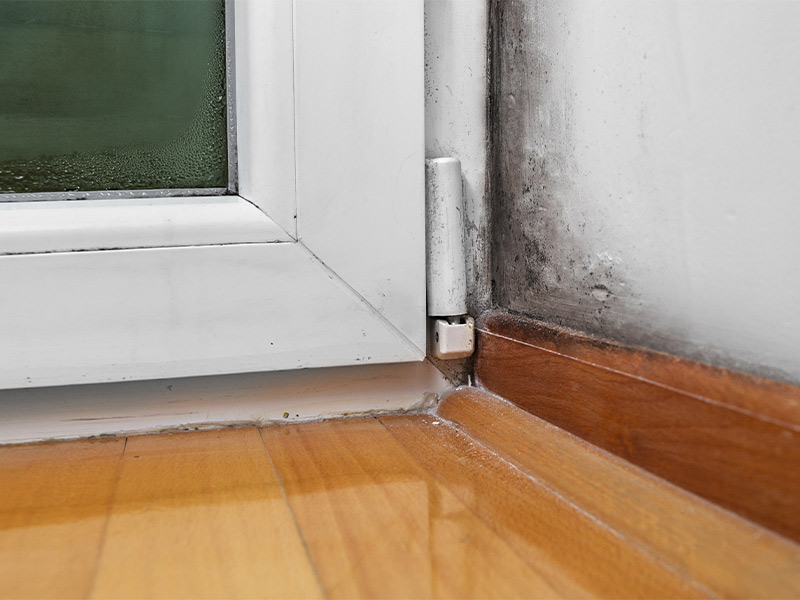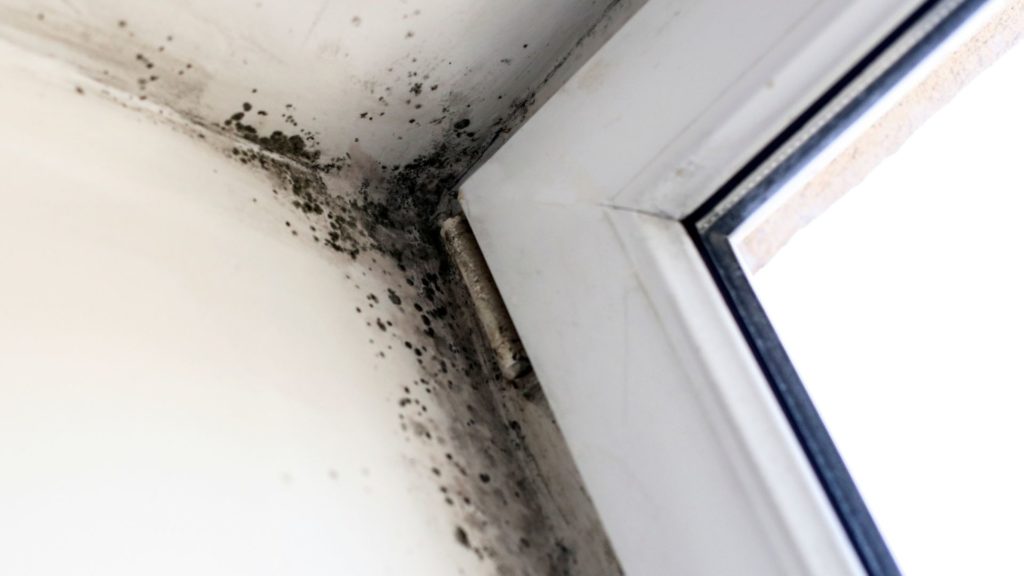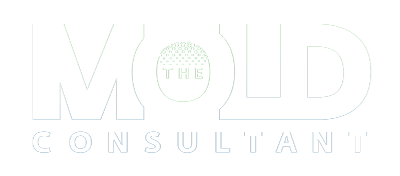
Mold is a common but insidious problem in Oklahoma homes and businesses. Found almost anywhere there is moisture and oxygen, mold thrives in the Sooner State’s warm, damp, and humid climate, and if it appears in your home or business, you, your family, and your employees could begin experiencing severe allergic reactions, chronic illness, and other serious health concerns.
The Mold Consultant is a locally-owned BBB-accredited business with more than 10 years of experience identifying, treating, and preventing mold in homes and businesses throughout the Oklahoma City metro area. Our team of expert technicians, led by state-licensed industrial hygienist Luke Hibbs, includes trained certified microbial remediation supervisors (CMRS), certified restorers (CR), and certified residential mold inspectors (CRMI), all accredited by the Indoor Air Quality Association (IAQA), Restoration Industry Association (RIA), and the American Indoor Air Quality Council (AIAQC).
Making Sense of Mold
Mold is more than just a stain or an area of discoloration. It’s a living thing—more specifically, a fungus and it spreads via microscopic sports that can float and drift to new locations where a colony begins to grow. Even if you don’t think you have a mold problem, you need to stay cognizant of your surroundings; mold can spread invisibly, and many mold issues are already extremely severe by the time you can see them.
Mold thrives in wet, dark areas, and while it won’t spontaneously appear in wet areas, factors like poor ventilation, water entry points into a building, or existing damage to a structure can allow spores from elsewhere to enter and establish themselves in ideal environments. Once mold starts to grow, it retains moisture for its own survival, keeping the area even more humid and wet, starting a rapid cycle of reproduction.
10 Most Common Signs of Mold in Your Home or Office
Well-established mold is hard to miss, but because mold problems can (and often do) start long before you actually see it, it’s important to know the other signs that could indicate you either already have a mold infestation or may develop one soon. By being proactive and identifying something suspicious early, you may be able to head off a bigger problem, saving you time, money, and stress.
1. Visible Mold Growth
If you can see mold, you’ve definitely got a mold problem—and it’s probably significantly developed already. Visible mold is most common in dark areas that are not frequently accessed or exposed to flowing air, like the corners of cabinets and closets, underneath boxes that have been in storage, or on the walls behind large pieces of furniture or office supplies. Keep an eye on the seams of your interior walls, like where the moulding meets the ceiling. Mold spreading from here could indicate that the growth is stemming from behind your wall, where it’s dark and hard to access.
Addressing visible mold growth as soon as you notice it is critical. If you can see mold on the wall, it is likely part of a much larger colony that may extend beyond your view. Approaching this issue benefits from professional help. Otherwise, you may wipe off one small branch of mold while the rest of the colony thrives and expands.
2. Musty Odors
The human nose is sensitive enough to notice when mold spores and material from the colony drifts into the surrounding air. These microscopic elements are called microbial volatile organic compounds (mVOCs), and humans usually think they smell musty or earthy. If your space suffers from persistent odors that you can’t place, consider whether your nose may be detecting something that your eyes can’t yet.
3. Allergic Reactions
Mold spores affect respiratory airways in more ways than one. For some people, the body responds negatively to spores as foreign invaders, generating an allergic reaction that can manifest as a sore throat, runny or stuffy nose, itchy eyes and ears, or sneezing. If you or the people in your building are experiencing allergy symptoms—especially if those symptoms do not align with the typical times of year when their usual allergens are active—consider whether mold may be the culprit.
4. Water Damage or Leaks
Mold does not spontaneously appear wherever there is moisture, but it is easy for mold spores from outside to drift into interior spaces via ventilation or even on clothes, shoes, and hair and rest dormant on a surface for months or even years without growing. If a building then suffers water damage or a leak that dampens a surface where a mold spore has been hiding, it can start to grow.
While signs of water damage or leaks don’t necessarily mean you have mold, it can be a good indicator that you may develop a mold problem in the near future, if you haven’t already because.
5. Condensation and Humidity
Where there’s moisture there’s often mold, and Oklahoma’s humid climate provides a perfect environment for mold no matter the time of year. While comfortable humidity levels for humans range from 30% to 50%, slight increases in moisture from these points are enough for mold to capture the water it needs to thrive and prompt it to start growing.
If you notice excessive humidity and condensation in certain parts of your home, there’s a good chance mold is growing somewhere nearby. Bathrooms are particularly at risk, so run a fan or vent during high-heat activities like showers whenever possible. Keep ventilation going and, if necessary, invest in a dehumidifier. These can work for single rooms or may be attached to the HVAC system, where they can capture water from the entire building.
6. Poor Ventilation
When air is moving, suspended water droplets do not have the opportunity to collect, and this keeps the humidity low. High humidity paired with poor air circulation, however, can spur mold growth. If the air in your home or business is stagnant or feels heavy and stale, you need to be on the lookout for mold.
It’s important to keep your home or business well ventilated through constant, consistent airflow. This might mean opening windows if the outdoor weather allows it (both temperature-wise and in terms of humidity), or running the HVAC system regularly. Pay special attention to areas prone to poor ventilation, primarily those that do not have their own vents or are blocked, such as closets with the doors always closed, supply areas, and spaces at the opposite end of the building from the HVAC unit (where a unit may struggle to generate enough force to properly circulate the air).
7. Peeling or Cracked Paint
Since leaks in the walls or ceiling can provide the moisture that mold spores need to start forming a colony and reproducing, mold can begin growing deep within the structure of your home then begin to spread from the point of origin like tendrils. Like fingers, these outgrowths can start to lift paint from the wall underneath as the mold spreads, making peeling or cracked paint an almost certain sign that you have a mold problem festering in an area you can’t see. In addition, as the paint deteriorates, it no longer serves its function as a physical barrier preventing additional moisture from getting into the wall or ceiling. Once this vulnerability is open, mold can grow even faster.
8. Warped or Bulging Walls
In more severe cases of mold growth, the colony has gone beyond merely slipping itself underneath paint and will start to compromise the structural integrity of larger pieces of architecture, like support beams and drywall. Because mold clings to moisture, it is also drawing wetness toward these vulnerable areas, which may begin to rot and weaken. As a result, walls may start to warp or bulge and compromise their structural stability. If you see walls where the paint appears stretched, or if there is a visual indication of a wall that does not make a straight line anymore, get it evaluated by a professional as soon as possible for safety reasons. They can investigate potential mold infestations behind walls using specialized tools and cameras.
9. Persistent Respiratory Issues
Many people suffer from allergies related to mold spores, but not everyone presents with the stereotypical itchy throat and red eyes. When mold spores are inhaled into the lungs, they come into contact with the membrane inside the respiratory system. This membrane is responsible for capturing, encapsulating, and eventually getting rid of the spores, usually by covering them in mucus that humans cough up and swallow.
If you are experiencing a frequent cough or feel as though you can never be free of a mucous-y or heavy sensation in the lungs, this may be attributable to a mold colony that you have not yet located in your home or business. In vulnerable or health-sensitive individuals, mold can cause serious respiratory conditions such as pneumonia.
10. Previous Mold History
One of the biggest warning signs that you may have mold in your building is if you’ve seen it there before. It can be incredibly difficult to remove mold—especially if you attempt a DIY solution like scrubbing the wall with bleach—which means that the problem is only delayed before another colony makes an appearance. Remain mindful or even make note of past mold problems and stay alert, both in the affected area and throughout the structure. Mold spores drift easily through the air, so you could still have a mold problem even if the original problem area seems clear. Staying proactive is the most effective remedy for mold because it prevents spores from gaining a foothold.
Stop Mold in its Tracks with The Mold Consultant in Oklahoma City
Mold is a serious problem that you simply can’t resolve without professional treatment. If you are noticing any of the signs of mold in your home or business, it’s important to contact a professional mold treatment and removal company like The Mold Consultant to properly remove the growth and prevent it in the future.
The Mold Consultant is the leading mold testing company in the Oklahoma City area, offering comprehensive commercial and residential mold and contaminant testing and inspection services like:
Swab tests
Viable air quality tests
Non-viable air tests
Asbestos testing
Radon testing
We use the latest in innovative technology to identify the moisture intrusion points that can be contributing to your mold growth and develop a treatment plan that includes non-destructive mediation solutions to keep your home or business safe and clean.


